Speakers
Description
Background: Standard methodology for aerobiome analysis involves air sampling using Hirst-type sampler and microscopic analysis of pollen and spore morphology (SRPS EN 16868, 2019). However, morphology-based approach has limitations in total biodiversity assessment and thus demands application of more sensitive DNA-based methodology.
This study aimed to evaluate the efficiency of three different air sampling approaches: Hirst-type sampler, high-volume and low-volume cyclones for use in DNA-based aerobiome diversity assessment.
Methods: Air sampling was conducted in two independent experimental setups on the Research Institute rooftop in Pannonian plain, Serbia using three different devices: Hirst-type samplers, hand-made cyclones and SASS 2300 devices, all sterilized prior sampling. The first sampling campaign was performed continuously over seven days in June 2023 using three, side-by-side operated Hirst-type samplers (10 l/min). A set of seven 24-hour samples were collected from each device. Two sets of samples were used for DNA analysis and the third was used for standard optical microscopic quantification of pollen and fungal spores. Additionally, two handmade cyclones (with and without water) were used for 24-hour low volume (flow was variable ranging from 4 l/min to 11 l/min) sample collection and subsequent DNA extraction. The second air sampling campaign was conducted in October and November 2023 using a high-volume cyclone sampler (the SASS 2300 connected with the SASS 4000 concentrator boosting sampling flow to 4000 l/min), and Hirst-type sampler, side by side. Each month, the two 12-hour samples (day: 6am-6pm, night: 6pm-6am of the same day) collected with high volume cyclone were subjected to DNA analysis and microbial cultivation following series of dilutions of fungi and bacteria on malt extract and tryptic soy agar, respectively, whereas the 24-hour Hirst-type sample was used for standard microscopic quantification of pollen and fungal spores. Environmental DNA (eDNA) extraction was performed in a second class safety cabinet, in a clean room with ISO5 conditions, using the DNeasy PowerSoil Pro Kit (QIAGEN, USA). The concentration of airborne eDNA was quantified using a fluorometric approach, while real-time PCR was used to confirm the presence of bacterial, fungal and plant DNA.
Results: Despite standard Hirst-type method confirmed abundant bioaerosols suspended in the atmosphere during both sampling campaigns (concentrations per sample: June 4568-12565 pollen and spores/m^3; October 2229-9600 pollen and spores/m^3; November 1180-4859 pollen and spores/m^3), the concentrations of eDNA extracted from 24-hour air samples collected by Hirst-type samplers and handmade cyclones were generally very low, ranging from undetectable to 161.9 pg/ul, while the eDNA concentrations from 12-hour samples collected by high volume cyclone sampler were higher (7-1770 pg/ul). Despite relatively low eDNA concentrations, the results of real-time PCR confirmed the presence of bacterial, fungal and plant DNA in most of the samples. However, there was no observed correlation between the total pollen or spore count and the DNA quantity, as indicated by real-time PCR Ct values. This lack of correlation is likely due to the low eDNA concentrations which make samples more susceptible to minor variations during handling, thereby hindering the start DNA concentrations of different microbial groups during the PCR preparation step. In line with DNA analysis, microbial cultivation of the high-volume samples from October and November confirmed notable abundance of viable fungi and bacteria, with CFU/ml ranging from 1x10^3 to 3.8x10^5. The closer morphological assessment of microbial isolates showed that certain species were almost exclusively observed in the day 12-hour samples (Aspergillus spp. and Trichoderma spp.), while others (Rhizopus spp.) were identified in the night samples.
Conclusions: Taken together, these findings represent only a part of the total fungal diversity and more comprehensive data can be collected by applying more sophisticated optical and DNA-based methods, including flow cytometry and DNA metabarcoding, respectively. The positive PCR reactions confirming fungal, bacterial and plant DNA obtained in this study hold promise for the application of such advanced techniques, even on low-concentration eDNA samples. These results highlight the importance of using multiple methods for collection and assessment of aerobiome biodiversity and dynamics, including both molecular, DNA-based and culture-based approaches. Further studies, incorporating long-term sampling, are imperative for capturing the temporal dynamics and trends of airborne microbial communities, improving the sensitivity of detection and providing more comprehensive understanding of airborne populations within a specific location.
Acknowledgements: This research was partially funded by the EC Horizon2020 Teaming project ANTARES (Grant Agreement No. 664387), the EC Horizon Europe SYLVA project (Grant agreement No. 101086109) and the Ministry Science, Technological Development and Innovations of the Republic of Serbia of the Republic of Serbia (Grant Agreement No. 200358).

